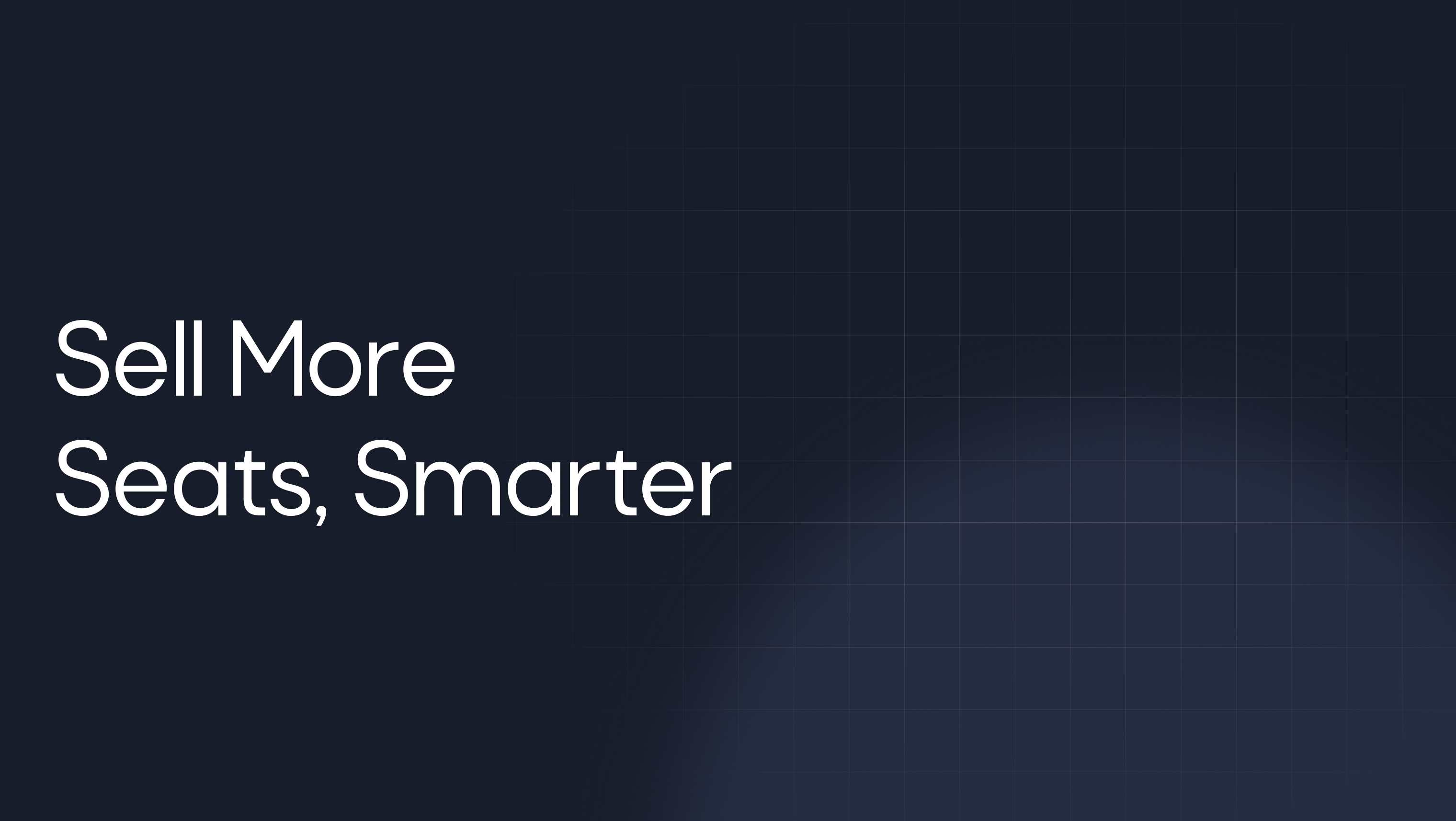Expansion Isn’t a Sales Sprint—It’s a Journey
Enterprise SaaS revenue rarely comes from the first contract. Real growth happens after onboarding, when new departments log in, cross‑functional projects spin up, and seat requests start hitting the admin’s inbox.
Yet many sales‑led orgs still treat seat expansion as a last‑minute quota grab—AEs scramble near renewal, wielding discount offers to nudge customers into bigger plans. The result? Awkward upsell conversations, slow approvals, and revenue that yo‑yos from quarter to quarter.
A smarter approach is expansion journeys—automated, behavior‑triggered plays that surface value at each usage milestone and guide champions toward natural seat growth months before renewal. Done right, expansions feel helpful, not pushy, and revenue climbs predictably.
This post breaks down how to design those journeys—step‑by‑step—so your enterprise accounts grow seats the way a healthy product should: organically, steadily, and without last‑minute panic.
Why Ad‑Hoc Seat Pitches Backfire
- Timing is off – Asking for seats before the product proves value feels like a cash grab.
- One champion, many stakeholders – A single admin can’t justify budget without cross‑department proof.
- Data silos – Sales, CS, and Product each hold pieces of the usage story but never stitch them together.
LifecycleX client analysis shows that 70 % of enterprise seat expansions occur within 60 days of a usage spike—yet most sales teams don’t reach out until renewal paperwork starts.
What Signals Expansion Readiness?
Enterprise motion means multiple personas, so you need more than one signal. High‑value triggers include:
- Seat saturation – active seats ≥ 85 % of licensed capacity.
- New team join – first login from a second department or region.
- Feature depth milestone – account uses three or more premium features.
- Collaboration velocity – files shared or projects created jump 30 % week‑over‑week.
- Pricing curiosity – admin opens seat‑management modal or visits the pricing page twice in 48 hours.
If two or more signals fire in a short window, the account is primed for expansion.
We explore usage triggers in Which Usage Milestones Signal It’s Time to Sell More Seats?—worth bookmarking as you craft rules.
Four Milestone‑Based Expansion Journeys
Below are battle‑tested plays we build for enterprise clients. Each journey slots into your lifecycle platform (Braze, HubSpot, Gainsight) and runs on autopilot.
1 — Seat‑Saturation Assist
- Trigger – Active seats hit 85 % capacity.
- Flow –
- In‑app banner only admins see: “Your team is thriving—almost at seat limit. Need help adding more?”
- Auto‑email to champion with seat‑growth ROI snapshot.
- CSM task to verify upcoming projects that might need extra seats.
- Why it works – Surfaces the issue early, frames expansion as removing a bottleneck, and arms the champion with numbers.
2 — Department‑Takeoff Journey
- Trigger – First user from a new department logs in and sends an invite within 48 hours.
- Flow –
- Personalized email to the original champion: “Looks like the Finance team just joined—here’s a quick success kit to scale rollout.”
- Embedded PDF with role‑specific use cases.
- Built‑in link – A tactic echoed in Post‑Demo Dropoff Is Real: Why SLG Teams Need Lifecycle Campaigns Too, where multi‑threading maintains deal momentum.
3 — Power‑Feature Momentum Loop
- Trigger – Account activates a premium feature (e.g., SSO, advanced analytics).
- Flow –
- In‑app tooltip for the champion showing next‑level feature combos.
- Follow‑up email case study: “How Acme Inc. cut reporting time 40 % after adopting Advanced Analytics across 3 departments.”
- Optional CTA: book a roadmap session (pre‑seed upsell discussion with SE + AE).
4 — Executive ROI Pulse
- Trigger – Quarterly cadence for accounts > $50k ARR.
- Flow –
- Auto‑generated PDF summarizing usage: hours saved, projects completed, cross‑team adoption charts.
- Short note from CSM: “Spotted three teams heavy on automations—let’s discuss scaling licenses to match demand.”
- Link to secure seat‑request form for quick procurement.
- Inline inspiration – Borrowed from Continuous SaaS Retention Campaigns where ongoing value reinforcement cuts churn.
Metrics That Show the Engine Works
- Seat‑expansion close rate jumped +27 % in 6 months.
- Average time from seat‑limit warning to purchase dropped from 19 days to 7 days.
- Upsell ACV grew +14 % because journeys teed up premium tiers, not just extra seats.
- Renewals with at least one expansion had 18 % higher NRR than flat renewals.
Avoid the Three Classic Expansion Pitfalls
- Quota‑first outreach – Users smell desperation; lead with value, not SKU count.
- One‑size messaging – IT cares about security; end‑users care about workflow speed. Segment accordingly.
- Late proof of ROI – If the first value recap arrives at renewal, budget is already locked. Share wins quarterly.
Implement in 45 Days
- Week 1‑2 – Audit product events; tag seat % and department metadata.
- Week 3 – Write journey copy; build in‑app banners & email templates.
- Week 4 – QA triggers on a sandbox account.
- Week 5‑6 – Launch Seat‑Saturation Assist; monitor conversion; layer in Department‑Takeoff.
Within two months you’ll see earlier seat requests, smoother procurement, and forecastable expansion revenue.
Expansion That Feels Helpful—Not Pushy
When every usage milestone triggers a timely, persona‑aware nudge, champions don’t feel sold to—they feel supported. Procurement cycles compress, AEs hit quota with less friction, and finance teams love the predictability.
Want seat growth that scales itself? Let’s talk. LifecycleX plugs usage data into expansion journeys that turn product momentum into ARR—without pushing, discounting, or last‑minute heroics.
